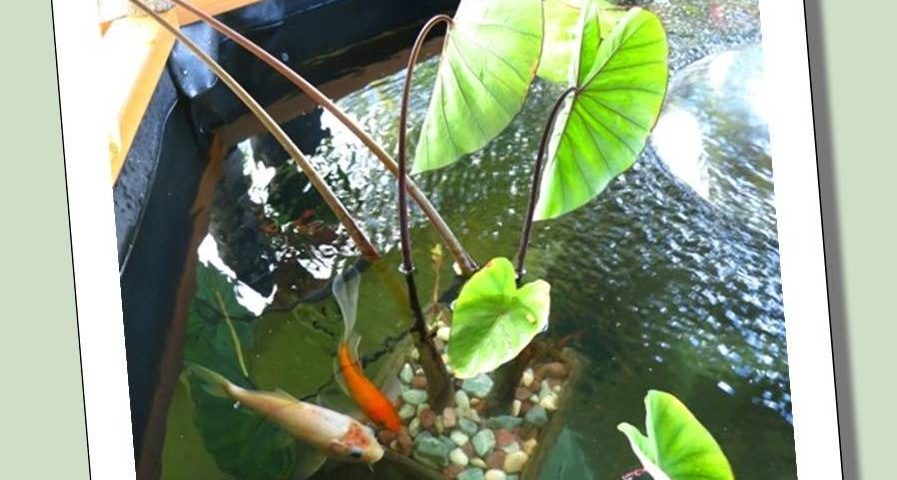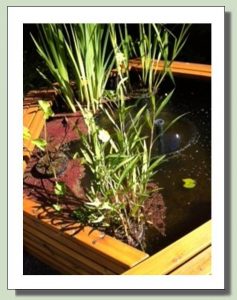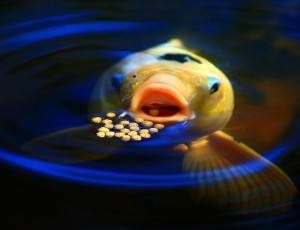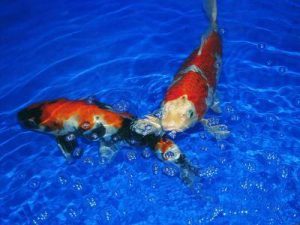
Managing algae has been the nemesis of pond owners for as long as ponds have been in existence. It is unsightly and can become a menace if not controlled. In extreme instances, algae can grow until it suffocates your plants and fish, and completely fills a pond. However, there are reasons this occurs and plenty of precautionary measures that can be taken to prevent such uncontrolled growth.
Think of algae as the “weeds” in your water garden. Algae thrive for the same reason the plants and weeds in your terrestrial garden thrive. They need light, nutrients, and warm water. Without any one of these three elements, algae will not be able to grow. Whether the problem is thick green string algae (sometimes called blanketweed) or water borne algae that turns your water into green “pea soup”, you can keep it under control by managing your pond environment.
CONTROLLING LIGHT
Controlling the amount of light that your pond receives is an easier task to accomplish than it sounds. There are several ways we can limit the amount of sunlight that reaches the pond’s surface. One way this can be accomplished is the location of the pond. The kind of pond you are planning on (e.g., a heavily planted water garden, or a fish-only koi pond) will determine how much direct sunlight per day your pond will require.
The fish-only koi pond will require far less sunlight than the water garden. Only several hours of direct sunlight each day is sufficient for a koi pond. The fish will benefit from obtaining some sunlight but do not need a full day’s worth and can actually get sunburned if there is no shading or shelter available. The water garden on the other hand, will require a minimum of six hours of direct sunlight per day. This is an adequate amount of light for most of the aquatic plants.
 A second way to control the amount of light that penetrates the surface of the pond is through the use of plants. Floating plants and other surface dwelling plants are a great way to minimize the amount of light that penetrates the surface of the water. Water Hyacinths and Water Lettuce are two of the most widely available floating plants that can be of benefit. Both of these plants are very aggressive growers and will reproduce in large quantities. They are very invasive and are considered a nuisance in some southern states. In harsher climates, this is not the case and neither plant is cold-hardy, so they will usually not survive winter.
A second way to control the amount of light that penetrates the surface of the pond is through the use of plants. Floating plants and other surface dwelling plants are a great way to minimize the amount of light that penetrates the surface of the water. Water Hyacinths and Water Lettuce are two of the most widely available floating plants that can be of benefit. Both of these plants are very aggressive growers and will reproduce in large quantities. They are very invasive and are considered a nuisance in some southern states. In harsher climates, this is not the case and neither plant is cold-hardy, so they will usually not survive winter.Typically, these are inexpensive plants and therefore, they can easily be replaced each year without digging too far into your pocketbook. Good submersed plants to help block out sunlight would include Water Lilies or Lotus. Lily pads are normally seen resting on the surface of the water. Lotus pads, on the other hand, will grow out of the water and take their form resting well above the waters surface. By blocking the surface of the pond these plants limit the amount of sunshine the algae receives, slowing its growth and helping you maintain control of your pond.
NUTRIENT CONTROL
The most important factor to address in algae control is the nutrients the algae need to grow. The nutrients that feed algae come from many sources and anything you can do to minimize the influx of these nutrients will help you control algal growth.
Rainwater can be a problem since it carries air pollutants and particulates into the pond which can, in turn, increase the amount of nutrients in the pond water.

Fish food, whether consumed by your fish or not, is another source of nutrients for algae. Food that is eaten by your fish is digested and excreted. The excretion is a byproduct of the fish food and a source of nutrients for plants and algae. Uneaten food rots and decays, this process provides ammonia and other nutrients found in the food to disperse in the pond water and allows algae to use it as food.
Nutrients can easily be controlled using some simple procedures. Good feeding habits help in the control of algae. You want to make sure that all the food you feed the fish is consumed within about five minutes. Food not consumed within five minutes is adding harmful nutrients to the water.
Finally, the introduction of additional plants to your pond can be very effective in algae control, as plants and algae compete for the same food. With enough plants, you can starve the algae of nutrients as the higher plant life forms consume the nutrients first. The use of oxygenating plants can reduce the amount of carbon dioxide in the water, which is needed by both plants and algae. The oxygenating plants use the carbon dioxide in the water for fuel, and in turn, produce oxygen. Since the plants are using up the carbon dioxide, there is less of it available for the algae to feed. The increased oxygen content of the water increases the pond’s ability to sustain life.
FILTRATION AND UV CLARIFIERS / STERILIZERS
Keeping your filter clean and working efficiently is equally important in controlling algae growth. Filtration is important for algae control for several reasons. Your filter traps debris. Although this debris is no longer visible in the pond, it is in your filter, and therefore, still in the water. If left in the filter, this debris will be broken down further and the remaining particulates will be small enough to pass through the filter and become part of the water. This in turn adds nutrients to the water.
Debris that is left in the filter can also clog the filter and kill off the beneficial bacteria that grow there. These beneficial bacteria are responsible for the breakdown of fish waste. When you lessen the bacteria’s ability to consume waste products, it leaves that much more available for the plants and algae to consume. By keeping your filter free of this debris, you will keep your helpful bacteria alive and optimize their ability to consume waste. Without proper filter maintenance, algae growth will be left unchecked.
UV clarifiers & sterilizers use ultraviolet light to control and eliminate algae and disease organisms in garden ponds. If you have goldfish or Koi in your garden pond, a UV clarifier or sterilizer is a valuable addition to your pond. They improve fish health, as well as helping with algae control. UV sterilizers are often mistaken for UV clarifiers. Although both pieces of equipment have the same purpose, a UV sterilizer is a more powerful algae killer than a UV clarifier.
Neither UV clarifiers nor UV sterilizers kill the beneficial bacteria, necessary for all around pond health, that grow on rocks and in the filter. When water is pumped through the UV sterilizer, the ultraviolet light that is emitted will break down the cell wall of the algae and the algae will then die. Some UV sterilizers are designed specifically for outdoor use. Make sure to get the appropriate sized UV sterilizer for your pond. One that is too small for the pond will not provide enough benefit.
ALGAECIDES & OTHER TREATMENTS
We also have other means for controlling algae including water additives. Additives can take on many forms, with the most common being the algaecides. Most of the algae inhibitors available are very effective in controlling algae; however, they can also be very effective in killing your plants. There are a few products on the market that do not affect plants. One that I have had success with is D-Solv by Crystal Clear. It does not completely eliminate algae, but does slow its growth substantially. When using any of these products, always check the label to make sure that it is safe for the plants and fish in your pond.
 Coloring agents, which typically color the water a dark shade of blue or black, work well for controlling algae growing below the water’s surface. They simply color the water so that the sunlight is unable to penetrate to the depths of the pond. Without light, the algae starve.
Coloring agents, which typically color the water a dark shade of blue or black, work well for controlling algae growing below the water’s surface. They simply color the water so that the sunlight is unable to penetrate to the depths of the pond. Without light, the algae starve.Another solution that has been used for years in Europe and has started to become more popular here in the US, and that is the use of barley straw. Barley straw needs to be placed in a location with good water flow and must also have sunlight. Given these conditions, after several weeks, the barley straw will start to decompose creating hydrogen peroxide, which will then kill off algae.
Remember that algae growth is normal in all ponds, and a small amount can provide many benefits including being a source of food for the fish and helping to control nitrate levels. However, once the level of algae exceeds healthy limits, it can reduce oxygen levels, cloud water, and restrict circulation, not to mention being unsightly. By carefully planning your pond’s location, maintaining a healthy compliment of aquatic plants, possibly installing a quality filter and a UV sterilizer, you can prevent the majority of algae blooms from occurring and make your pond a healthy home for your fish and a place of beauty.
